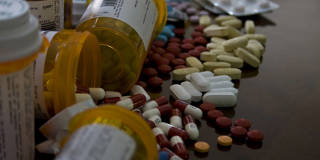When it comes to finding solutions to problems like the proliferation of fake or low-quality drugs, policymakers in the developing world are more likely to look abroad than at home. This is a big mistake, as local innovation is likely to be central to any successful effort to address the problem – and many others as well.
BOSTON – As we learn more about the threat from substandard and counterfeit medicines, it is becoming clear that it is a far greater problem than previously thought. It is also a scourge that is most acutely felt in developing countries, where fake and low-quality pharmaceuticals kill more than 500,000 people a year and affect millions more by contributing to the emergence of diseases that are resistant to existing treatments.

BOSTON – As we learn more about the threat from substandard and counterfeit medicines, it is becoming clear that it is a far greater problem than previously thought. It is also a scourge that is most acutely felt in developing countries, where fake and low-quality pharmaceuticals kill more than 500,000 people a year and affect millions more by contributing to the emergence of diseases that are resistant to existing treatments.